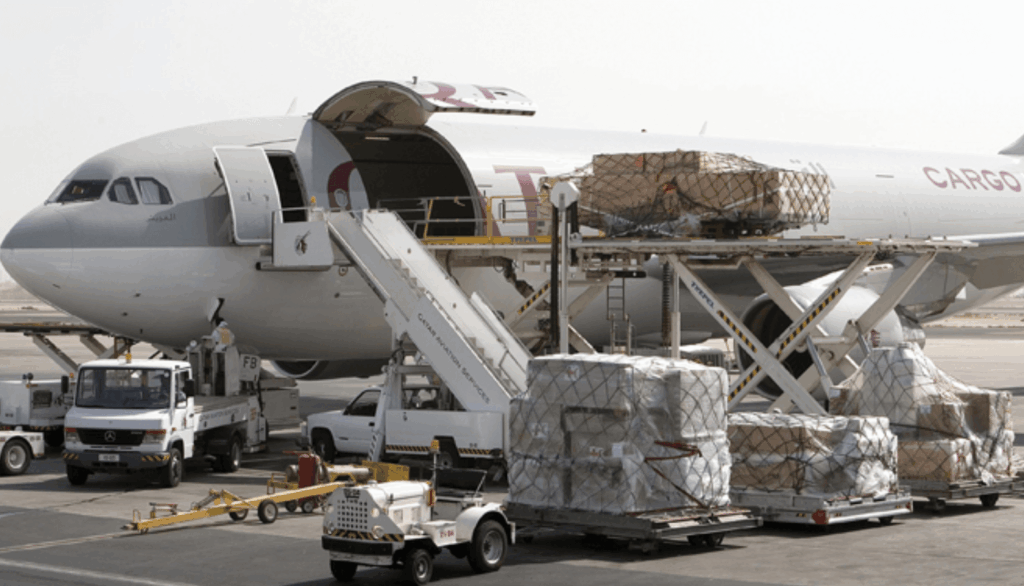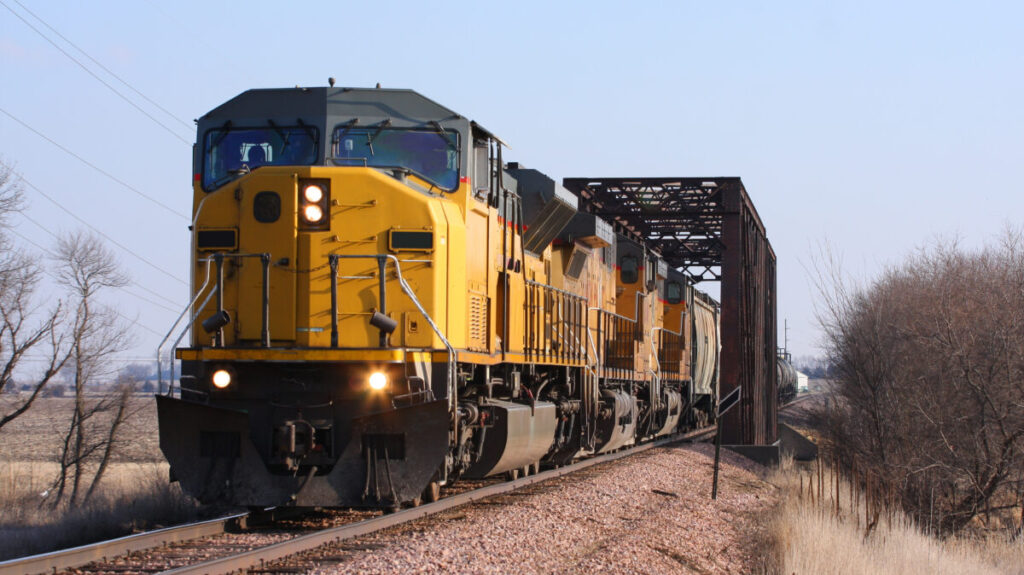- By Della tj
- October 17, 2025
- Rail Freight, Shipping
Global trade between China and Europe keeps expanding, and trusted rail freight from China to Netherlands has become a vital logistics bridge. It offers a perfect balance of speed, reliability, and cost. Companies seeking a dependable, eco-friendly, and time-saving transport option now rely heavily on the China–Europe rail network connecting major cities across both continents.
Why Choose Trusted Rail Freight?
Rail freight is faster than sea freight, significantly cheaper than air, and highly reliable. It minimizes delays, ensures predictable schedules, and lowers environmental impact. Businesses benefit from flexible services like FCL and LCL, transparent pricing, and steady capacity.
| Shipping Method | Avg Cost (40ft, USD) | Transit Time | CO₂ Emission | Reliability |
|---|---|---|---|---|
| Air Freight | 8,500–10,000 | 5–7 days | High | High |
| Sea Freight | 2,000–3,000 | 30–40 days | Medium | Moderate |
| Rail Freight | 3,000–4,000 | 15–18 days | Low | High |
Additionally, rail freight reduces inventory pressure by providing consistent transit schedules, helping importers better control their supply chains.
How Rail Freight Works Between China and the Netherlands
The China–Europe Railway Express connects key Chinese origins—such as Chongqing, Xi’an, Chengdu, and Yiwu—to Dutch destinations including Rotterdam, Tilburg, and Amsterdam.
Process overview:
- Cargo collection and container loading at Chinese terminal.
- Export customs declaration and clearance.
- Cross-border rail transport via Kazakhstan, Russia, Belarus, and Poland.
- EU customs clearance at the Netherlands.
- Last-mile delivery by truck to final consignees.
Furthermore, modern GPS tracking and electronic data interchange simplify coordination between exporters, carriers, and importers.
Shipping Time and Cost Overview
Transit times depend on the starting point, route, and customs efficiency. Below are average references:
| Origin City | Dutch Destination | Transit Time | Average Cost (40ft) |
|---|---|---|---|
| Xi’an | Rotterdam | 16 days | USD 3,200 |
| Chengdu | Tilburg | 17 days | USD 3,400 |
| Chongqing | Amsterdam | 18 days | USD 3,600 |
| Yiwu | Rotterdam | 19 days | USD 3,800 |
These figures exclude local trucking but include rail and handling charges. Businesses can accordingly estimate delivery schedules with minimal delay.
Required Documents for Rail Freight
Accurate documentation is key to avoiding customs delays.
| Document | Purpose |
|---|---|
| Commercial Invoice | Declares product value and transaction terms |
| Packing List | Lists cargo details, weights, and volumes |
| Bill of Lading | Proof of transport agreement |
| Certificate of Origin | Confirms goods’ manufacturing country |
| Customs Declaration | Required for export and import |
| Insurance Certificate | Protects against cargo loss or damage |
Ensuring details such as HS codes, declared values, and consignee information match on all documents helps guarantee smooth processing.
Cost Factors Affecting Rail Freight
The cost of trusted rail freight from China to Netherlands depends on several elements:
- Container Type: 20ft, 40ft, or 45ft HQ containers.
- Goods Type: Standard, temperature-controlled, or hazardous.
- Route Distance and Demand: Pricing varies seasonally.
- Customs & Insurance Fees: Depend on cargo value and category.
| Container Type | Average Cost (USD) | Suitable Cargo |
|---|---|---|
| 20ft | 2,200–2,800 | Small or lightweight goods |
| 40ft | 3,000–3,800 | Regular shipments |
| 45ft HQ | 3,800–4,300 | Large-volume cargo |
Accordingly, selecting the proper container size and route helps maximize efficiency and reduce total logistics expenses.
Real Shipment Case Studies
📦 Case 1: Automotive Parts Shipment
Origin: Chengdu, China
Destination: Rotterdam, Netherlands
Cargo Type: 20 tons of automotive components
Container: 40ft FCL
Transit Time: 17 days
Freight Cost: USD 3,400
Transport Mode: Rail via Kazakhstan–Belarus–Poland
Result: Delivered on time with 35% cost savings compared to air freight, ensuring continuous supply for the client’s assembly line.
📦 Case 2: Electronics Shipment
Origin: Xi’an, China
Destination: Tilburg, Netherlands
Cargo Type: 12 pallets of consumer electronics
Container: Temperature-controlled 40ft
Transit Time: 15 days
Freight Cost: USD 2,950
Transport Mode: Rail via Russia–Poland corridor
Result: Goods arrived damage-free, customs completed efficiently, and transit time reduced by 45% compared to sea shipping.
Environmental and Logistical Advantages
Rail freight emits up to 70% less CO₂ than air and 50% less than sea freight. Additionally, it avoids ocean congestion and unpredictable air cargo delays.
Main advantages include:
- Reliable weekly departures and arrival times.
- Digitalized tracking from China to Europe.
- Sealed, secure containers for safety.
- Compatibility with last-mile truck delivery.
- Compliance with EU sustainability goals.
As a result, businesses using rail freight not only save time and money but also strengthen their environmental commitments.
Customs, Future Trends & Key Takeaways
Smooth customs clearance requires cooperation between exporters and forwarders. Early preparation of all documents, pre-clearance submissions, and tariff verification prevent costly delays.
Emerging trends shaping rail freight:
- Smart container tracking using IoT sensors.
- New routes via Central Asia and Eastern Europe.
- Paperless clearance systems accelerating cross-border processing.
- Eco-efficient locomotives reducing emissions.
In conclusion, trusted rail freight from China to Netherlands provides a cost-efficient, reliable, and sustainable logistics channel. Its consistent schedules, reduced carbon footprint, and stable rates make it the ideal solution for modern importers and exporters aiming for long-term success in Europe’s competitive market.
Conclusion
In summary, trusted rail freight from China to Netherlands is transforming modern logistics by combining cost efficiency, environmental benefits, and punctual delivery. For companies aiming to optimize supply chains, this service stands out as a dependable and scalable transport solution.
- Consult TJ China Freight Forwarding for the lowest quote. They will provide you with reliable, cost-effective service.
FAQ:
Q1.How often do trains operate between China and the Netherlands?
Trains depart 3–5 times weekly, ensuring consistent and reliable service for cross-border rail freight shipments.
Q2.What is the average rail freight cost from China to the Netherlands?
On average, rates range from USD 150–200 per CBM, depending on weight, distance, and seasonal demand.
Q3.Can I ship small batches via rail freight?
Yes, LCL (Less than Container Load) services allow small cargo shipments at shared container rates.
Q4.Are there temperature-controlled options for sensitive goods?
Indeed, refrigerated and temperature-controlled containers are available for pharmaceuticals, food, and electronics.
Q5.How are customs duties calculated for rail imports?
Duties depend on product HS code, declared value, and applicable EU tariff agreements.




